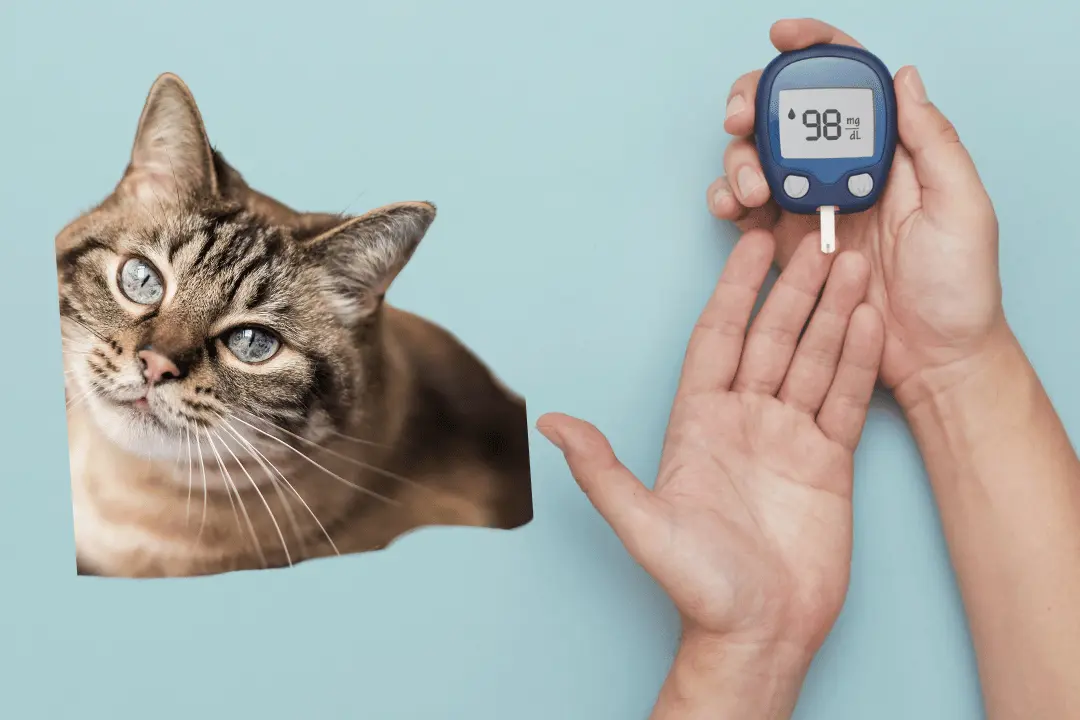Cats are beloved pets for many people around the world, but just like humans, they can suffer from serious health conditions. One of the most common diseases in felines, particularly older cats, is diabetes. Managing diabetes in cats can be challenging, but a new study has uncovered an intriguing and promising way to help control the condition. Researchers in Argentina recently reported that a cannabidiol (CBD)-enriched extract derived from cannabis helped improve diabetes management in a cat. This case report underscores the potential of CBD as a supplementary treatment for feline diabetes, a discovery that could significantly impact cats and their owners.
Diabetes mellitus, or simply diabetes, is a condition that affects the way the body manages glucose (sugar) levels in the blood. For cats, as for humans, this usually means they don’t produce enough insulin, or their body isn’t able to use it properly. Insulin is a hormone that helps regulate blood sugar, and without it, glucose levels rise, leading to serious health issues like increased thirst, weight loss, and even nerve damage. Treatment typically involves insulin injections and strict dietary management, but achieving consistent blood sugar control can be difficult, as was the case with the 18-year-old cat involved in this study.
If you think your cat might have diabetes, there are a few signs to look out for. Cats with diabetes often show increased thirst, more frequent urination, a bigger appetite, and may still lose weight despite eating more. They may also become more tired or show signs of weakness. With any of these symptoms, your cat needs a vet visit. A veterinarian will likely perform tests to measure blood and urine glucose levels, and a fructosamine test may be done to get a better picture of your cat’s blood sugar over the past few weeks. Early detection can make managing the disease much easier, as well as help your cat live a healthier life.
During this research, an 18-year-old female cat was diagnosed with type 2 diabetes. She was given insulin shots twice a day and a special diet to manage her blood sugar, like many cats. However, despite these efforts, her condition was not fully under control. That’s when the research team decided to introduce CBD into her treatment plan.
The cannabis plant contains the compound cannabidiol (CBD), but unlike its more well-known cousin, THC, it doesn’t produce a “high.” Instead, people have praised CBD for its potential health benefits, which include its anti-inflammatory and antioxidant properties. In recent years, people have been exploring the use of CBD for a variety of health issues in pets, from anxiety to chronic pain. The research team, led by Dr. José Ignacio Massabo and Dr. Gabriela Puiatti, wanted to see if CBD could help manage the symptoms of diabetes in their feline patient.
They used a CBD-rich extract from the Blue Shark cannabis strain, specifically bred to have very low THC levels and a high concentration of CBD. Three months after starting insulin therapy, they added the CBD extract to the cat’s treatment. They gave it twice a day in very small doses, mixed it with olive oil, and administered it directly into the cat’s mouth.
After three months of using the CBD-enriched extract, the results were promising. The cat’s blood sugar levels stabilized, leading to a reduction in the required insulin dose from 5 to 4 units per day. This decrease in insulin needs is significant, as it suggests that CBD may have helped the cat’s body better regulate its own glucose levels. The researchers also observed other improvements in the cat’s overall health. For instance, she started to drink less water and urinate less frequently—both common signs of diabetes—and her energy levels and behaviour improved. She became more alert, playful, and slept more soundly, which are all signs of better well-being.
Dr. Massabo explained, “We were amazed by how much the cat’s quality of life improved with the addition of CBD to her treatment. Not only did it help stabilize her blood sugar, but we also saw improvements in her behaviour and overall energy levels. It’s a promising sign that CBD could play a supportive role in managing diabetes in cats.”
It’s important to note that CBD did not replace insulin in this case. They used the extract as a “co-adjuvant,” or supplementary, treatment alongside insulin injections. This means that while CBD showed outstanding potential, it wasn’t a cure for diabetes. Instead, it helped make existing insulin therapy more effective, and the researchers believe that it could be an important tool in improving diabetes management in cats.
CBD’s interaction with the endocannabinoid system, which exists in both humans and animals, is one of the key reasons it might help in diabetes management. This system plays a role in regulating many bodily functions, including metabolism and insulin sensitivity. While there is still much to learn about exactly how CBD works, early studies suggest that it could help reduce inflammation and improve the body’s response to insulin, making it easier to control blood sugar levels.
The implications of this research are exciting. Diabetes is a lifelong condition, and anything that can make managing it easier for both pets and their owners is worth exploring. If future studies confirm these findings, CBD could become a popular supplement for diabetic cats, potentially reducing the amount of insulin they need and helping to control their symptoms more effectively. This could also pave the way for more research into how CBD might help other conditions in pets, particularly those related to ageing and chronic disease.
However, as with any new treatment, it’s essential for pet owners to approach CBD use with caution. Despite the positive results of this case study, further research is necessary to fully comprehend the long-term effects and determine the appropriate dosages for various animals. Dr Puiatti cautions, “While CBD shows excellent promise, it’s important that pet owners consult with a veterinarian before trying it. Every cat is different, and what works for one might not work for another.”
In conclusion, this case study offers a glimpse into the potential of CBD as a supplementary treatment for diabetes in cats. The fact that it helped reduce the need for insulin and improved the cat’s overall well-being is an encouraging sign for future research. As scientists continue to explore the benefits of CBD, we may soon have more tools at our disposal to help manage chronic conditions in our pets, offering them a better quality of life.
While we’re still in the early stages of understanding how CBD works in animals, this research provides hope for the future of feline diabetes care. For now, though, the best advice for cat owners is to stay informed and consult with their vet if they’re considering adding CBD to their pet’s treatment plan.
Citation: Massabo, J. I., Puiatti, G., & Ferrero, P. (2024). Use of cannabidiol-dominant extract as co-adjuvant therapy for type 2 diabetes mellitus treatment in feline: Case report. Medical Cannabis and Cannabinoids. S. Karger AG, Basel. https://doi.org/10.1159/000541034



